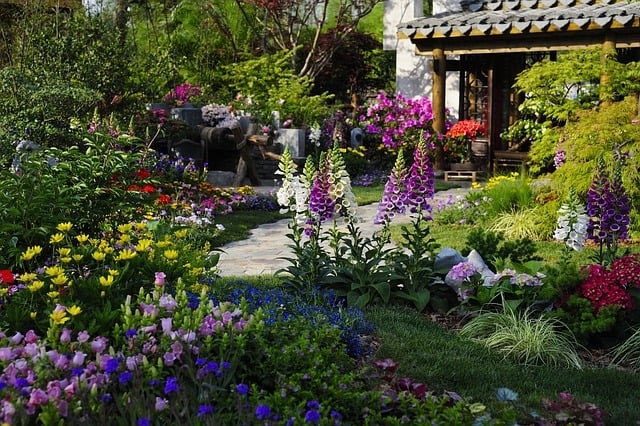Landscape design is both an art and a science, combining aesthetics with functionality to create beautiful outdoor spaces that are in harmony with nature. Whether you have a small backyard or a vast estate, understanding the principles of landscape design can help you transform your outdoor space into a visually appealing and functional oasis. In this post, Drake’s 7 Dees in Portland explores the four fundamental principles of landscape design that serve as the backbone of creating stunning and cohesive landscapes.
Unity and Harmony
Unity and harmony are the cornerstones of landscape design, and they refer to the coherence and consistency that should be present in the overall composition. Achieving unity means ensuring that all elements of the landscape work together as a whole rather than competing with each other for attention. A harmonious design leads to a sense of completeness, making the space feel balanced and inviting.
To achieve unity and harmony in landscape design, consider the following:
● Consistent Theme
Select a theme or style that resonates with your preferences and complements the architecture of your home. Whether it’s a formal garden with straight lines and geometric shapes or a naturalistic design with curves and flowing elements, sticking to a specific theme helps create a unified look.
● Repetition
Repeating certain elements throughout the landscape, such as plants, colors, or materials, can tie the entire space together. This repetition creates a sense of rhythm and balance.
● Scale and Proportion
Ensure that the size and proportions of various elements, like plants, hardscape features, and outdoor furniture, are in harmony with each other and the overall space. Avoid overwhelming smaller areas with massive structures or filling large areas with tiny features.
Balance
Balance in landscape design refers to the visual equilibrium of elements within the space. A well-balanced design doesn’t necessarily mean a symmetrical one; it can also be achieved through asymmetrical arrangements, where elements with different visual weights are distributed evenly to maintain stability.
There are two types of balance in landscape design:
● Symmetrical Balance
In this type, both sides of the landscape are mirror images of each other. It is an excellent choice for formal gardens and lends a sense of order and formality. Symmetrical balance can be achieved by placing identical or similar elements on either side of a central axis.
● Asymmetrical Balance
Asymmetrical balance involves the strategic placement of different elements with similar visual weight to create a balanced composition. For instance, a large tree on one side of the yard can be balanced by a group of smaller shrubs on the other side.
Balance in landscape design ensures that the space doesn’t feel lopsided or heavy on one side, creating a sense of visual stability and comfort.
Focal Points
Focal points are the key elements in a landscape that capture attention and draw the eye. They act as the center of interest, giving the viewer a place to rest their eyes and appreciate the beauty of the surroundings. Without focal points, a landscape can feel monotonous and lacking in personality.
To create effective focal points:
● Select Prominent Features
Choose elements that naturally stand out in the landscape, such as a stunning tree, a water fountain, a sculpture, or a gazebo. These features should be eye-catching and unique.
● Positioning
Place focal points strategically to guide the viewer’s gaze and create a visual hierarchy. They should be visible from multiple vantage points, encouraging exploration of the entire landscape.
● Accents and Lighting
Enhance focal points with accents like colorful flowers or decorative lighting to make them more prominent, especially during the evening hours.
Simplicity
Simplicity is the art of editing and restraint in landscape design. Avoid cluttering the space with too many elements that can overwhelm the senses and detract from the overall beauty of the landscape. A simple design allows the natural beauty of each element to shine through and creates a more calming and tranquil environment.
To achieve simplicity in landscape design:
● Less is More
Embrace the philosophy of “less is more” when it comes to selecting elements and materials for your landscape. Focus on a few essential elements that align with your theme and vision.
● Negative Space
Negative space, also known as empty or open space, is as crucial as the elements themselves. Allow for some breathing room between features to create a sense of serenity and prevent overcrowding.
● Purposeful Planting
Choose plants thoughtfully and avoid overcrowding the garden with too many different species. Opt for plants that complement each other and serve a specific purpose in the landscape.
The four principles of landscape design – Unity and Harmony, Balance, Focal Points, and Simplicity – serve as a guide for creating visually appealing, balanced, and functional outdoor spaces. By understanding and applying these principles, you can transform your landscape into a harmonious and captivating sanctuary that brings joy and tranquility to you and your visitors.

Recent Comments